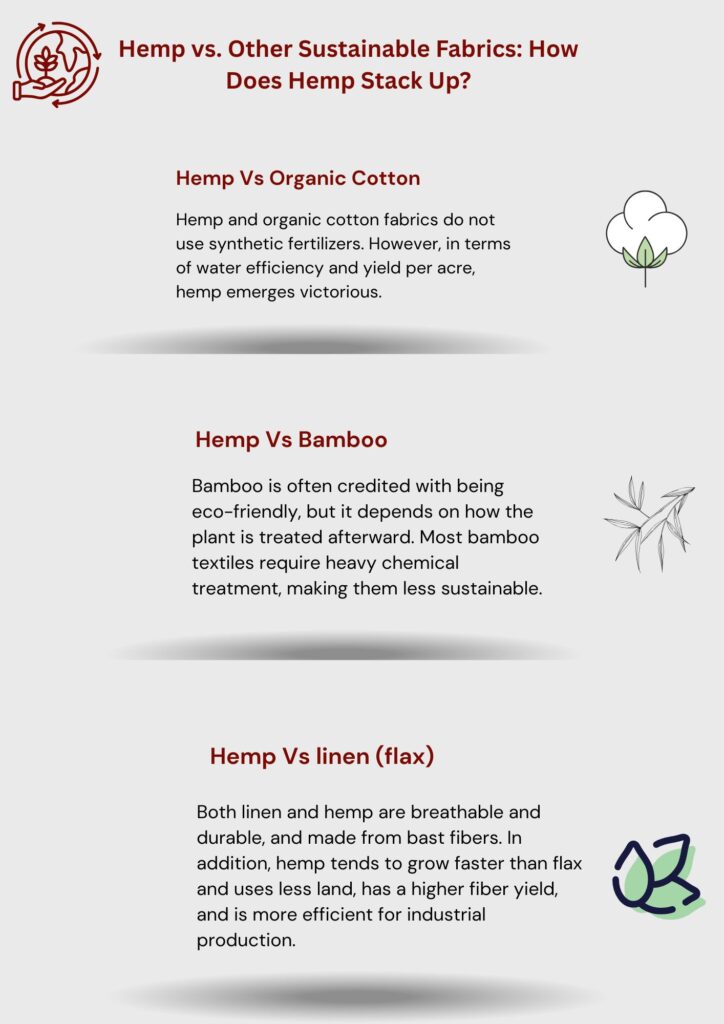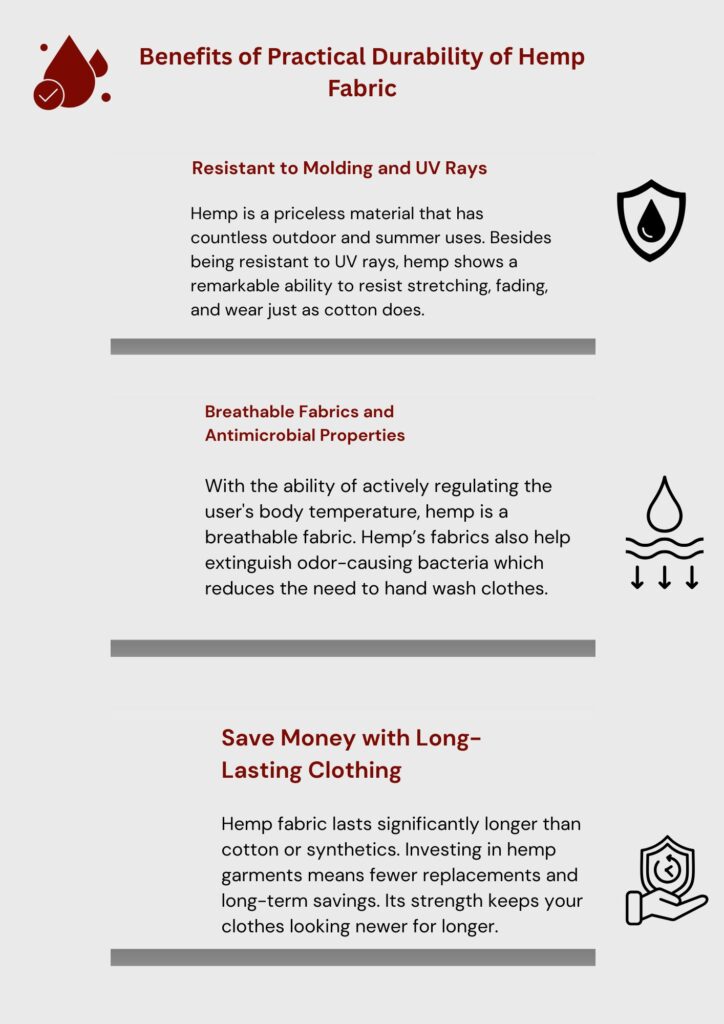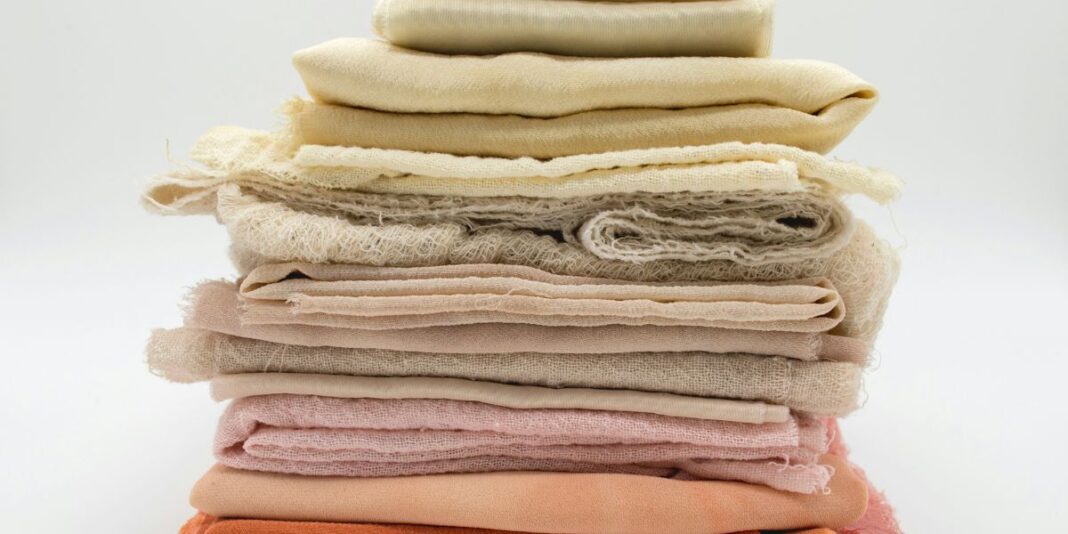Introduction
The textile industry has recently experienced the resurgence of the oldest cultivated plants in the world, “hemp.” As early as the 5th century, people from Asia, Europe, and the Middle-East were using hemp to make woven clothing, ropes, paper, sails, and later on in the 19th century, ships directly incorporated hemp. Along with being used as an industrial crop, hemp was also agricultural favorite due to its strength and versatility.Is hemp a sustainable fabric
The fabric stemmed from the stalks of the plant cannabis sativa, more specifically from the fibrous section known as bast. Even with the historical importance it holds, the rise of 20th hulled restriction and synthetic materials led to the devastative fall of hemp. Thankfully, dominant eco conscious fashion trends have brought hemp back in style owing it to its sustainable features.
Development of Hemp into Textiles
Legally restricted for a number of years because of its association with cannabis, the recent legal reforms are inviting the public to embrace hemp fabrics once again. Before and after the 1900, hemp did not have an easy rise to the top. Its legacy can be traced back 6,000 years to China, where they were one of the first countries to use it as a fabric, with European sailors later on using it as ropes, which stood strong against saltwater.
The Reasons Behind the Rising Appeal of Hemp in Sustainable Fashion
Due to its sustainability and durability, hemp is being adopted by sustainable fashion brands. The cultivation of hemp fabrics needs less water than other crops, requires no synthetic chemicals, and doesn’t decompose easily. Capitalizing on the growing consumer demand for sustainable clothing, brands are now paying attention to the potential of hemp. Furthermore, sustainable fabric, consumers are also asking questions surrounding sustainability of hemp fabrics.
Environmental Considerations of Hemp: Why Hemp Fabric Excels in the Green Category
Hemp’s environmental advantages are one of the strongest reasons to consider its comeback in the fashion world. From cultivating it to the carbon absorption, hemp checks many boxes when it comes to sustainability.
Lower Water Use (Compared to Cotton)
Compared to cotton, hemp requires 50% less water. Cotton t shirts use over 2700 liters of water, whereas hemp uses significantly less. This makes it appealing to farmers in water-scarce regions. Answering the question is hemp a sustainable fabric, eco-friendly farmers would say yes because of its water efficiency.
No Need for Pesticides or Herbicides (Organic Growth)
Hemp’s growth gives it the ability to naturally resist pests and weeds. Because of this, there is no need for chemical pesticides and herbicides which help prevent the contamination of soil and water. As opposed to this, sustainable fabric,conventional cotton constitutes nearly 16% of the global insecticide consumption. The organic growth of hemp makes it safe non-toxic consumable fabric for the environment and the users.
Carbon Negative Crop (Absorbing Co2)
A less-known property of industrial hemp is that is a carbon negative crop. During its lifecycle, it absorbs more CO2 than it emits. For every ton of hemp cultivated, there is approximately 1.63 tons of carbon dioxide captured from the atmosphere..Is hemp a sustainable fabric. This significantly aids in their efforts to mitigate climate change.
Unlike synthetic fabrics, hemp fabric is fully biodegradable. After disposal, it breaks down within months and enriches the soil, sustainable fabric,making hemp ideal for a circular fashion economy. In comparison to hemp, polyester and nylon shed microplastics and take centuries to decompose.
Soil Regeneration (Improves Soil Health)
Also, hemp helps with the regrowth of earth. Its deep roots helps prevents erosion and also aids in loosening compacted soil. Moreover, hemp contributes to phytoremediation where it removes toxic heavy metals from contaminated soil. For farmers, these advantages make hemp a soil-conserving rotation crop.
Hemp vs. Other Sustainable Fabrics: How Does Hemp Stack Up?
An increasing amount of fabrics claim to be sustainable. In that regard, how does hemp differ from the most popular ones? Here’s a concise comparison.

Hemp Vs Organic Cotton
Hemp and organic cotton fabrics do not use synthetic fertilizers. However, in terms of water efficiency and yield per acre, hemp emerges victorious. It consumes 50% less water and provides as much as 200% more fiber. Hemp’s durability also makes it a better investment for clothing over the long term.
Hemp Vs Bamboo
Bamboo is often credited with being eco-friendly, but it depends on how the plant is treated afterward. Most bamboo textiles require heavy chemical treatment, making them less sustainable. On the other hand, hemp can be processed through mechanical or water retting methods, which diminishes the use of chemicals.
Hemp Vs linen (flax)
Both linen and hemp are breathable and durable, and made from bast fibers. In addition, hemp tends to grow faster than flax and uses less land, sustainable fabric, has a higher fiber yield, and is more efficient for industrial production.
Hemp vs. Synthetics Fabrics
One of the positive attributes of fabrics like hemp is that unlike polyester and nylon, they do not emanate from petroleum, are non-biodegradable and does not emit microplastics with every wash. Synthetic hemp is fully compostable. For consumers prioritizing the environment, hemp is the decisive victor.
Is Hemp Really Sustainable? Addressing the Controversies
While hemp’s benefits are numerous, its critics put forward some allegations regarding its sustainable practices. Allow’s address these issues head on.
Energy Used in Processing (Debunking Myths)
One of the allegations revolves around the idea that hemp processing entails high amounts of energy consumption..Is hemp a sustainable fabric. There are now technologies like enzymatic or mechanical processing which are scaling down energy consumption. In comparison to synthetic fibers, the energy required throughout hemp’s life cycle is drastically smaller.
Chemical Retting vs. Water Retting
Historically hemp processed used to extract fiber using chemicals. There is a trend among some producers to use water retting or steam explosion methods instead. These methods do not cause water pollution or greenhouse emission, hemp, making them more environmentally friendly.
Dyeing & Finishing Processes
Regardless of the material used, coloring fabric can be resource demanding. Many hemp-based brands, however, plant or low impact dyes. The development of waterless dyeing as well as digital dyeing is helping in this regard. When sustainably dyed, hemp maintains its eco advantage.
Benefits of Practical Durability of Hemp Fabric
Hemp has several practical and enduring benefits that makes it stand out. It offers relief and comfort to users which explains why it is ideal for daily wear. Hemp’s sustainable practices also provide an additional benefit.

Resistant to Molding and UV Rays
Hemp is a priceless material that has countless outdoor and summer uses. Besides being resistant to UV rays, hemp shows a remarkable ability to resist stretching, fading, and wear just as cotton does. Moreover, hemp’s natural fibers do not mold adding even more value.
Breathable Fabrics and Antimicrobial Properties
With the ability of actively regulating the user’s body temperature, hemp is a breathable fabric. Hemp’s fabrics also help extinguish odor-causing bacteria which reduces the need to hand wash clothes. These clothes then use less energy and water and last longer.
Hemp softens over time and gets stronger with each wash. Alongside the comfort it provides, hemp blends with Tencel and organic cotton which allows them to be more comfy, remain eco-friendly, and regain its strength.
Challenges and Limitations
While there is no doubt hemp fabrics bring unmatched usefulness to the table, there are still some barriers that slow down their adoption and uses.
Restricted International Cultivation & Legal Barriers
Outdated legislation continues to restrict hemp production in numerous countries. Growing restrictions in the U.S. and parts of Europe are not mirrored in some regions of Asia and Africa. Broader acceptance and advocacy are essential in establishing a global hemp economy.
Greater Compared To Conventional Fabric
Hemp fabrics usually command a higher price than conventional fabrics such as cotton and polyester. This is because there is a lack of industrial-scale processing and supply chains. However, it is more economical over time due to its durability.
Consumer Misconception and Lack of Awareness
Hemp is still retained as a byword for cannabis. Misconceptions and lack of education stall its market growth. They need to undertake campaigns to highlight its sustainability advantages as well as educate the public on the environmental benefits of hemp.
Hemp in Fashion & Future Trends
The use of hemp fabric hails the arrival of a new era of fabric. Designers and brands that are considered sustainable have increasingly favored it.
Brands Using Hemp (Patagonia, Levi’s, etc.)
Brands like Patagonia, Levi’s and Tentree now sell products that include hemp. These corporations emphasize the sustainability and low environmental impact of hemp. As more brands realize the opportunities, more labels are expected to join the hemp movement.
Innovations in Hemp Textiles (Blended Fabrics, Hemp Silk)
Researchers are also working on incorporating silk, Tencel and organic cotton to make softer and high-performance fabrics from hemp. There is now hemp denim, hemp wool, and even hemp activewear. Such innovations enhance the perception of hemp by the mainstream consumers.
Government Policies Supporting Hemp Farming
Canada and the U.S. are now supporting research in hemp farming by providing funding and subsidies. These policies encourage the advancement of the supply chain and also make hemp textiles affordable to brands and consumers.
How Consumers Can Support Hemp Sustainability
The promotion of hemp’s sustainability starts and hinges entirely on consumers. This is how individuals can influence the supply for sustainably sustainable hemp clothing.
Choosing Hemp Based Clothing
Select apparel crafted from 100% hemp or blended with other fabrics. Certifications such as GOTS and OEKO-TEX ensure eco-friendly production. Choosing hemp over cotton or polyester aids the green textile initiative.
Supporting Ethical Hemp Brands
Brand s that openly share their supply chain and sourcing, labor, and ecological footprint practices should be supported. Brands that adopt ethical production foster trust and move the industry forward.
Advocating for Legalization & Subsidies
Legislative action for pro hemp policies, farmer subsidies, and research funding are all within the consumer’s reach. More focus on policy frameworks can eliminate existing hurdles and increase hemp production internationally.
Conclusion
Examining history, environmental benefits, comparisons with other materials, and the real-life applications all lead to one fizzing answer that hemp is undoubtedly one of the most sustainable fabrics. It remains unrivaled due to the fact that it uses minimal water, does not need chemicals to grow, is carbon-negative, and has soil regenerating abilities. These qualities make this fabric one of the front runners what eco-friendly fashion strives to achieve.
Although it may be one of the front runners, hurdles such as high costs of production, limited supply, and legal restrictions are still standing it’s growth. Regardless of al these challenges, the fabric is favorable due to its comfort and low environmental impact making it smart purchase for brands willing to embrace advanced technology.
FAQs
Sustainably, hemp is one of the most fabrics avialble to man. No need for heavy pesticides, minimal water consumption, and regenerating soil are just the tip. Compared to synthetic fibers, it is also bio-degradable.
Compared to cotton, hemp uses much less water, up to fifty percent less. In fact, hemp uses up to fifty percent less water and more than doubles the value of cotton’s output per unit area. It does not need pesticides to grow and lasts considerably longer than conventional cotton making it more environmentally friendly.
Hemp fabric is completely compostable and biodegradable. Unlike synthetic fabrics, which take centuries to decompose, hemp fabric breaks down naturally within a few months.


